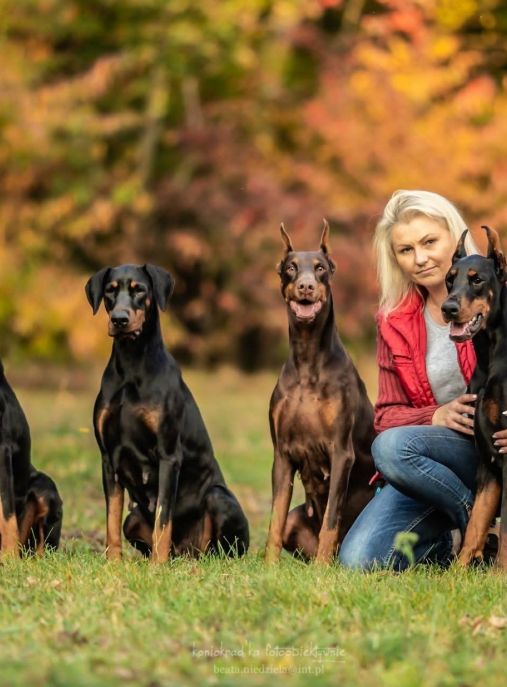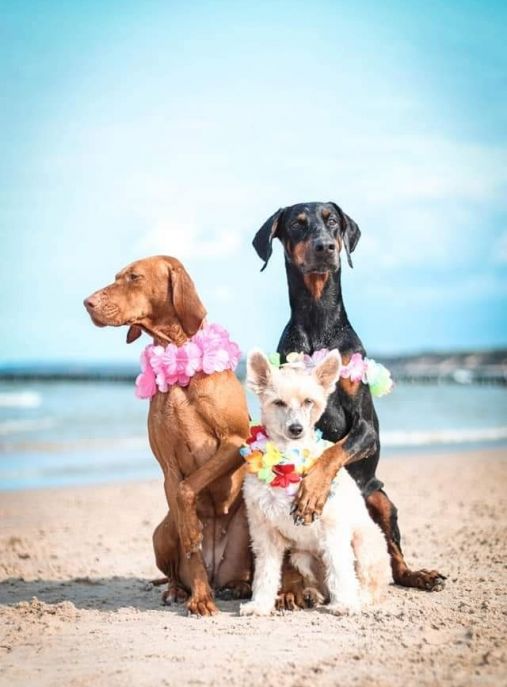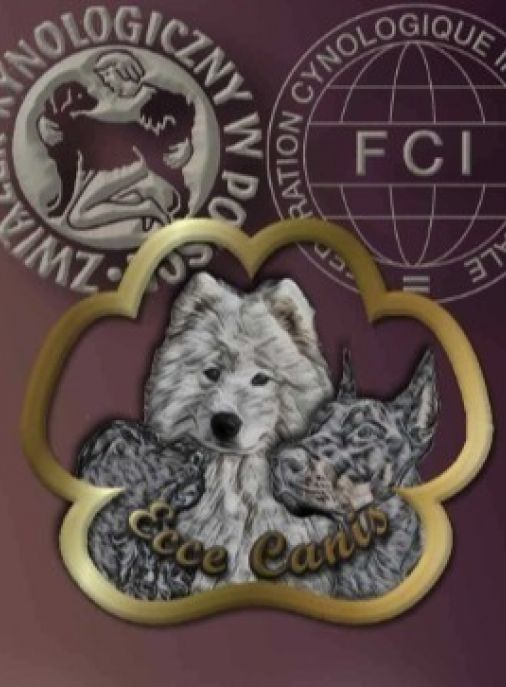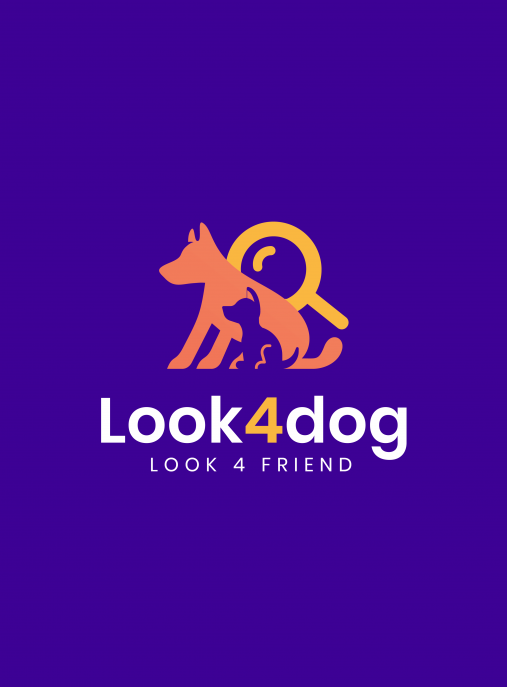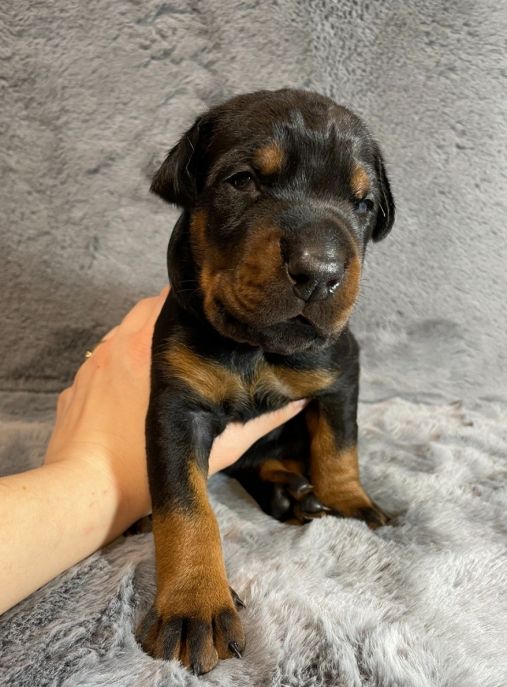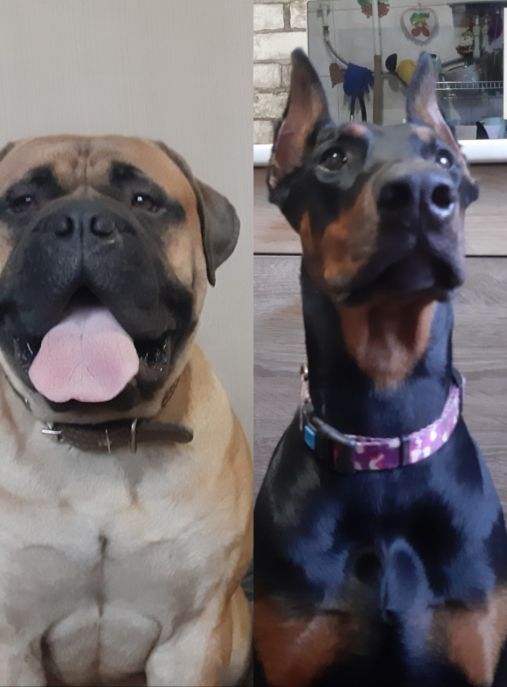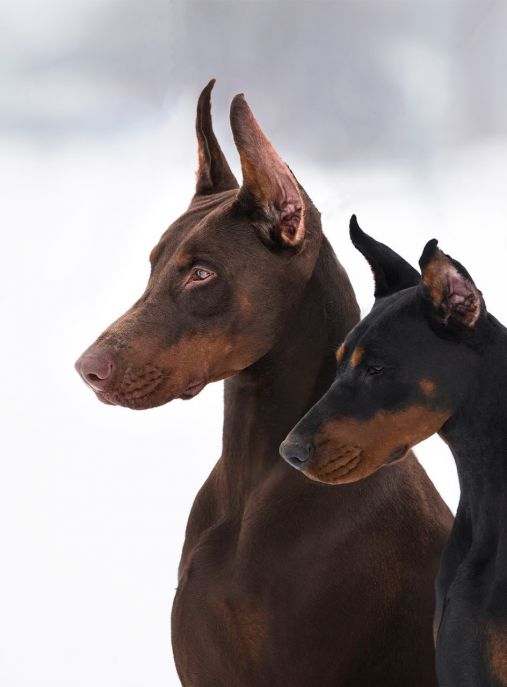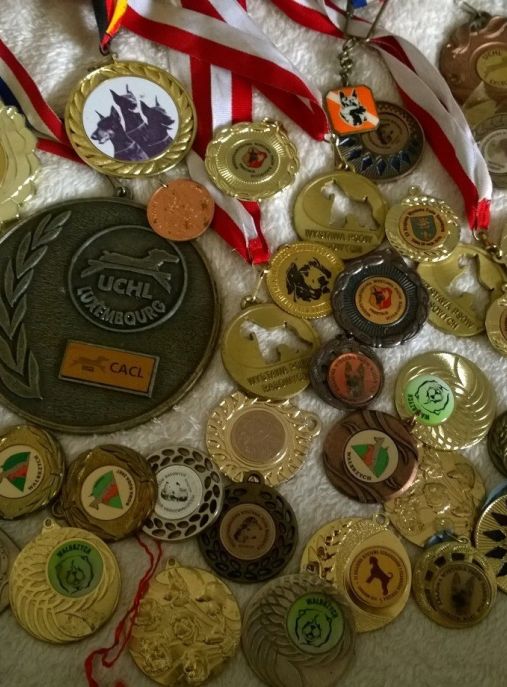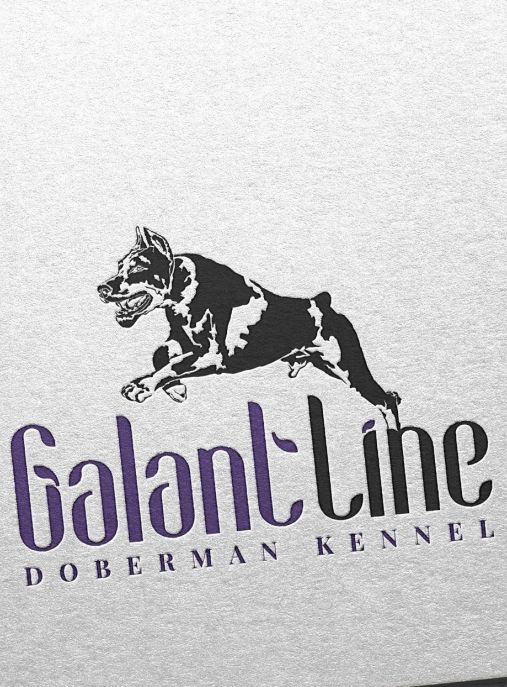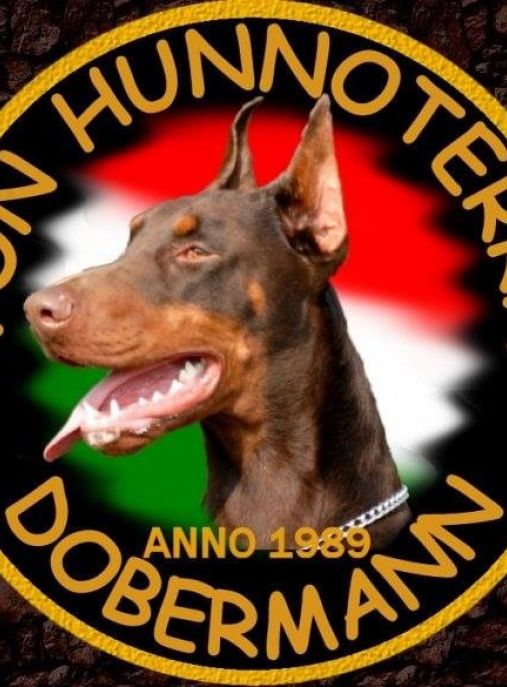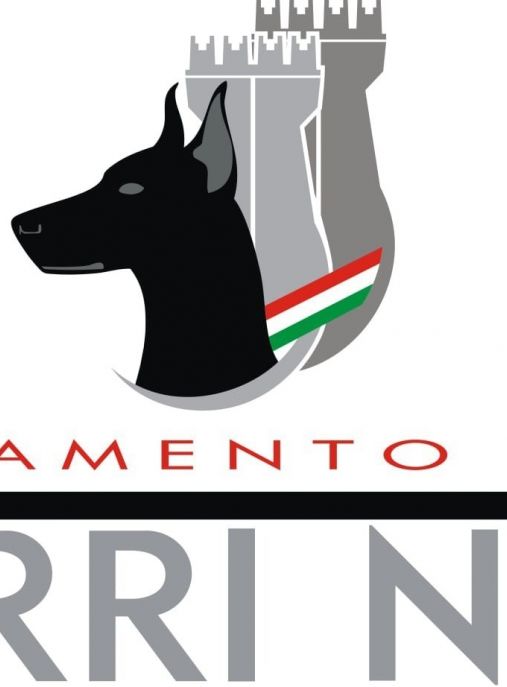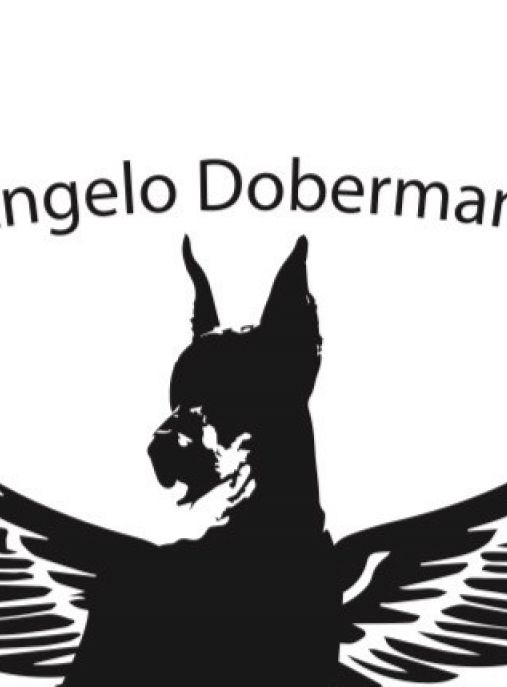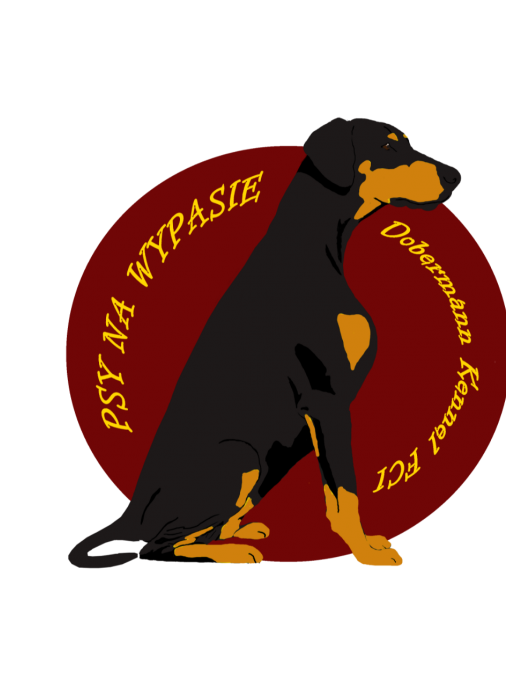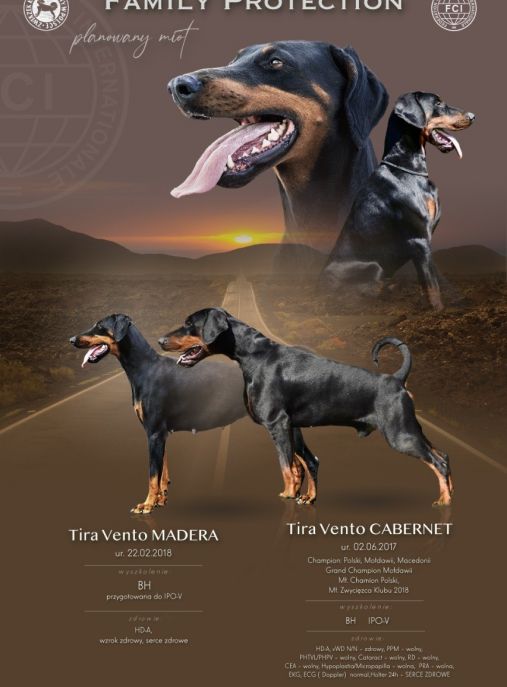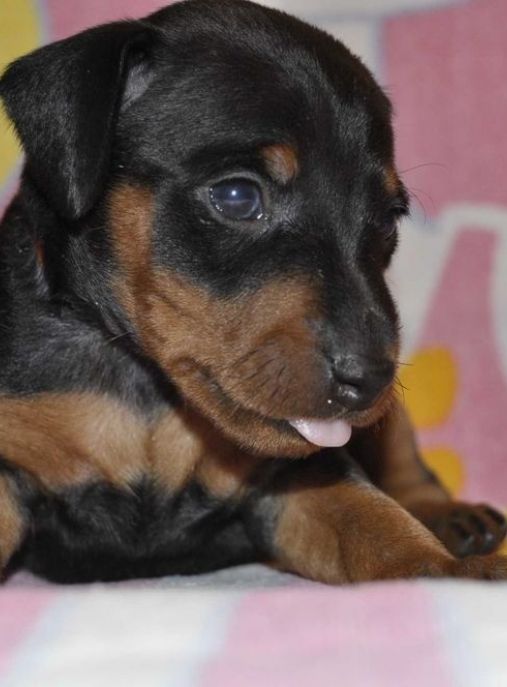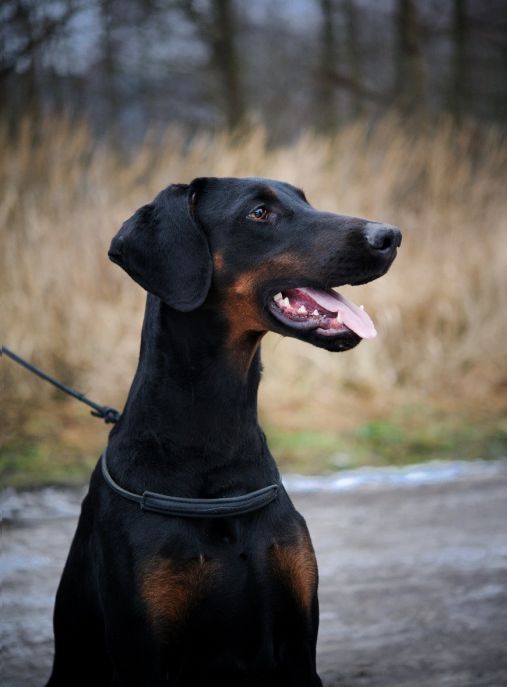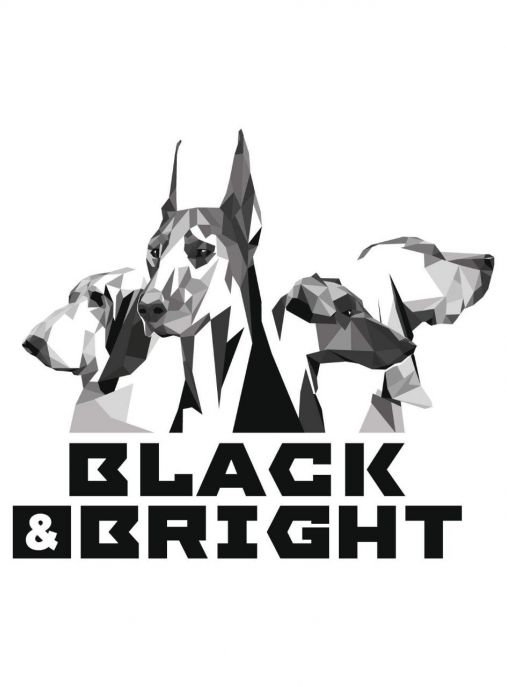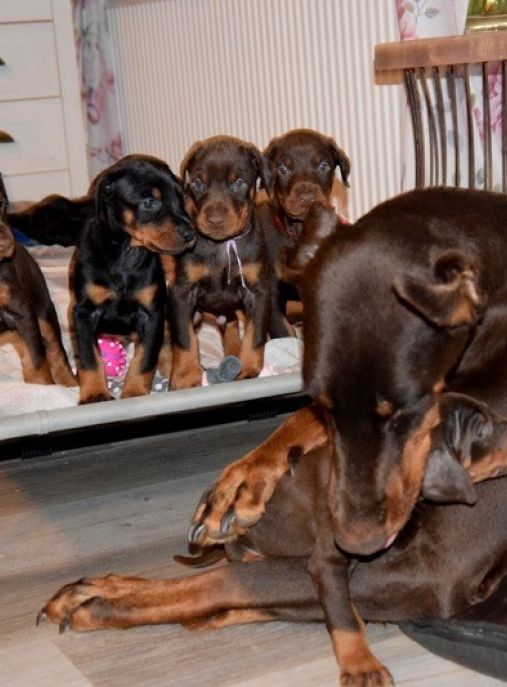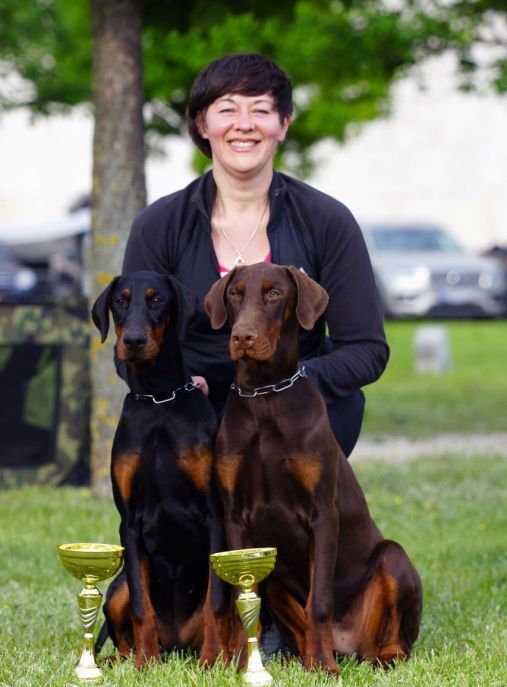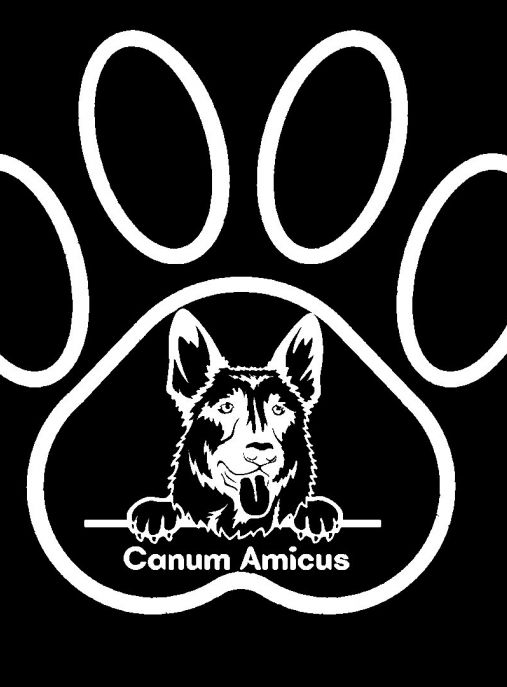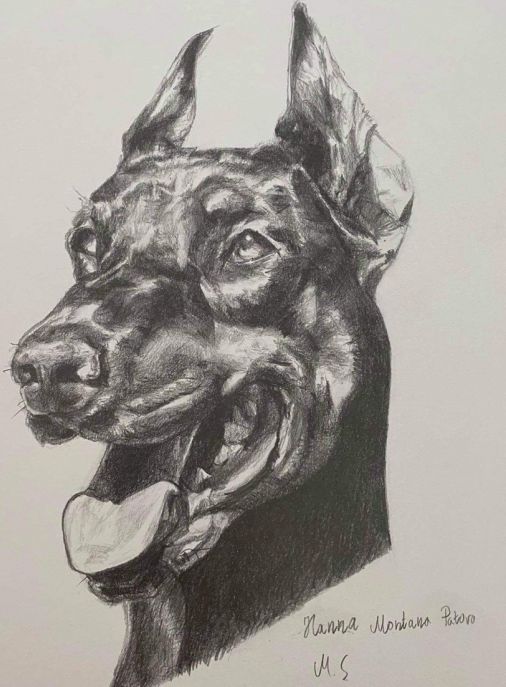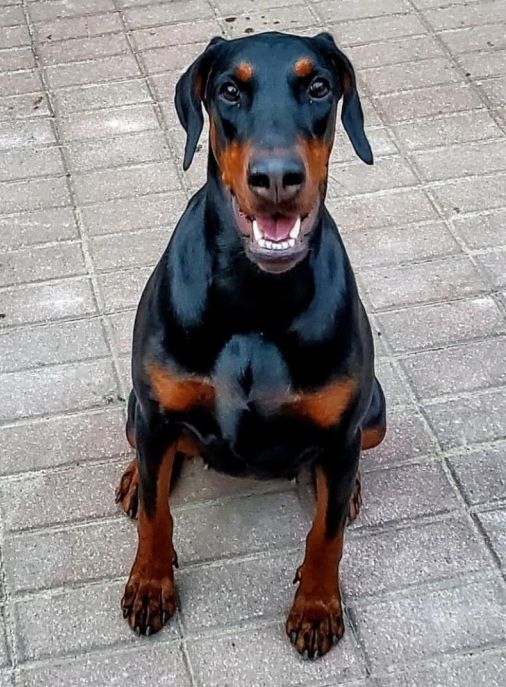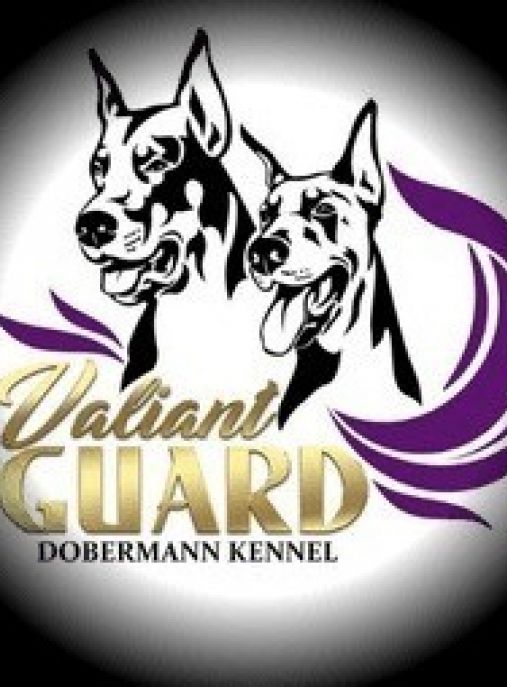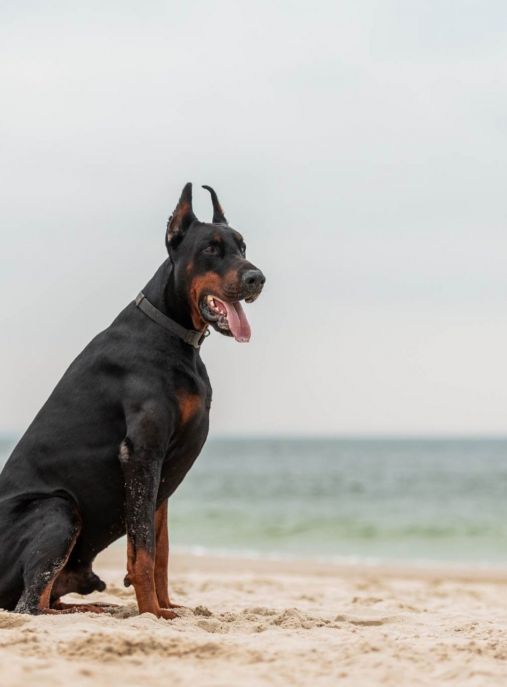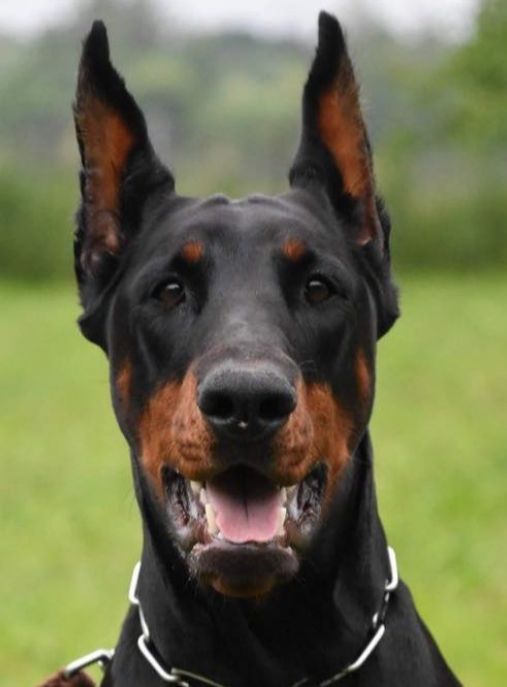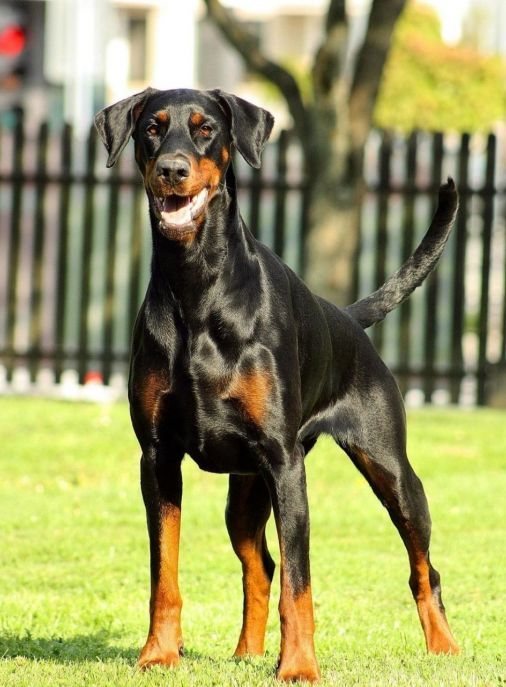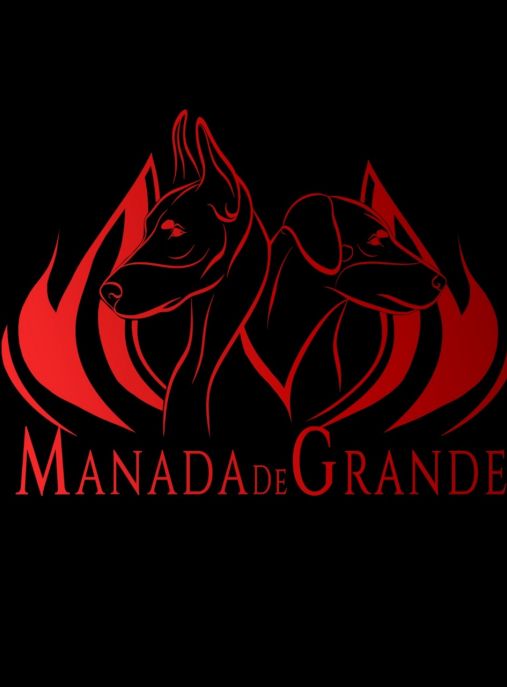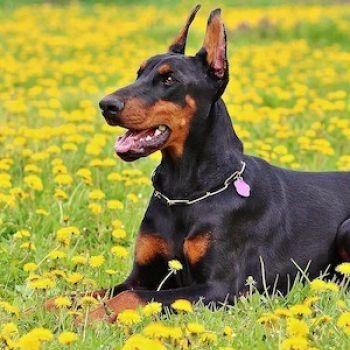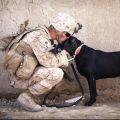The Dobermann is perhaps the most recognizable type of Pinscher. It was bred in Germany by the dog-catcher, Carl Friedrich Louis Dobermann. It is considered that the male crossed the most aggressive and most alert dogs he caught in order to have the perfect guard animal. This is how the Doberman came into being.
This breed has existed for a short time, about 150 years. From the very beginning, it was used as a watchdog and a police dog. It should be mentioned that these dogs were also eagerly used as military dogs during World War I and II. The Dobermann is very popular and respected, mainly because of its defensive abilities. It is appreciated by people all over the world, and this also applies to Poles. A typical Dobermann is medium-sized, strong and beautifully muscled. While it is strong, it should be elegant and noble in lines.
The Dobermann is a strong animal, although it has a slim body. It is athletic and muscular. The male dog measures from 68 to 72 cm and weighs 40-45 kg, while the height of the female at the withers is 63-68 cm and she weighs 32-35 kg. These dogs live approximately 10-13 years.
The Doberman is a medium-sized dog, very well-muscled and strong. It is a proud dog with an elegant body line. Dobermans are friendly and gentle, devoted to their family and loving children. The Doberman is easy to train. It likes working with people very much. It is courageous and hard. It must be confident and fearless.
The Doberman is primarily a guard dog, which is why it is characterized by a heavy temper, distrust and extreme vigilance. It is an excellent defender, it has an excellent sense of smell and hearing, so no one will pass by the house unnoticed. Even its bellicose posture can scare off strangers.
Pride and independence of the pooch makes it possible to train it well, only on the condition of mutual cooperation and trust. It is an animal that requires a lot of attention from its owner from a puppy. It is forbidden to have this dog for inexperienced, impatient and inconsistent people.
Contrary to the stereotype, Doberman aggressiveness has been significantly weakened in recent years. If you train the dog properly, you won't have any problems with it. It is suitable as a family dog. It is very gentle and composed with children. However, it is advisable to buy this dog when the children are a little bigger and will not annoy it.
The Doberman is completely devoted to its owner and will be with him until the end. It is not eager to run away from home. While a Doberman is hard to upset, its patience also has limits. When provoked, it may show aggression even when well trained. It will not forgive anyone who upsets it.
Keeping a Doberman in an apartment may not be the happiest solution. We can afford it as long as we provide the dog with the right amount of exercise. The Doberman is very energetic, and sports give it satisfaction and pleasure. You should never neglect its need for activity, as this will be reflected in your pet's hyperactivity, excessive barking, and even aggression.
- Coat
The Doberman is a very easy-to-care dog. Its hair is short and hard, and when you brush it regularly (at least once a week, preferably with a rubber brush or a special glove), there is no problem with sticking hair everywhere. With this type of hair, there is a low need to clean your pet. The lack of undercoat means that it hardly gets dirty. All it needs to do is shakinf off mud and other debris.
- Eyes
The dog's almond-shaped blue or brown eyes should be checked regularly. In case of inflammation, you should consult a veterinarian as soon as possible. It is also recommended to clean eyes with a special liquid and cotton pad to remove unnecessary secretions, such as "sleepyheads".
- Ears
Doberman's ears are droopy so they are also quite prone to inflammation. It is necessary to check them frequently, at least once every two weeks.
- Claws
The Doberman is a very active dog so frequent claw trimming is not mandatory. However, it is worth keeping an eye on them and performing this procedure once in a while so that our pet does not have problems with moving.
The Doberman is usually black or dark brown with tan. Tanning occurs on the muzzle, as a single spot on the cheeks, above the eyes, under the neck, as well as on the chest, wrists, inner thighs and arms. The coat is short, dense and hard. It fits smoothly to the body. The undercoat is not allowed.
Different colours are associated with various conditions of the Doberman's body.
Unfortunately, the Dobermann is exposed to quite a lot of diseases, such as:
- demodicosis
- dilated cardiomyopathy
- dysplasia
- von Willebrand disease (manifested by long, profuse hemorrhages, associated with poor blood clotting)
- defects in the position of the eyelids
- degeneration of the cervical vertebrae
- skin diseases
Prostate problems are common in male dogs.
This dignified, impeccable dog must receive good quality food. Dobermann's diet must be appropriate to its age and activity. Be careful not to overfeed your pet so you should put away larger snacks between meals.
It is worth paying attention to the nutrients contained in food in order to provide the dog with a lot of vitamins for proper development. When feeding your dog with dry food, we don't have to worry about food composition. However, it is worth getting acquainted with it before giving the food to the dog. You should avoid cheap supermarket feed, as it contains only 4-10% of meat. It is dominated by animal by-products and has a high cereal content. A good dry food, on which our pet will develop well and healthily, is one that contains at least 30% of dried or fresh meat, and is free of grains, dyes and artificial preservatives.
Your Doberman will surely be pleased when it feels raw meat in its bowl - this is the second method to feed this beautiful dog. It is worth getting acquainted with the Barf diet. It is most similar to the natural food of wild canines. It is based on the provision of only unprocessed animal products, such as: raw meat, raw offal, meat bones and fish, eggs, vegetables and fruit. The amino acids, vitamins, fatty acids and minerals that they contain have a positive effect on the development of our four-legged friend. This type of nutrition has a great influence on the appearance and condition of the dog so it is worth getting acquainted with it in detail.
